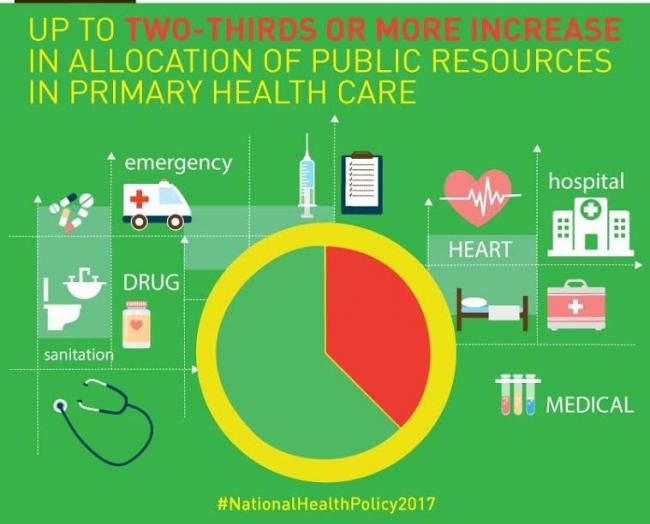
Union Health Minister Nadda apprises Lok Sabha about National Health Policy 2017
The Union Cabinet has approved the National Health Policy 2017. The last National Health Policy was framed in 2002.
Excerpts from his statement to both house of the Parliament on Thursday"
"The policy informs and prioritizes the role of the Government in shaping health systems in all its dimensions- investment in health, organization and financing of healthcare services, prevention of diseases and promotion of good health through cross-sectoral action, access to technologies, developing human resources, encouraging medical pluralism, building the knowledge base required for better health, financial protection strategies and regulation and progressive assurance for health. The policy is aimed at reaching healthcare in an assured manner to all, particularly the underserved and underprivileged.
The policy aims for attainment of the highest possible level of health and well-being for all at all ages, through a preventive and promotive health care orientation in all developmental policies, and universal access to good quality health care services without anyone having to face financial hardship as a consequence. This would be achieved through increasing access, improving quality and lowering the cost of healthcare delivery.The broad principles of the Policy are centered on professionalism, integrity and ethics, equity, affordability, universality, patient centered and quality of care, accountability and pluralism.
The policy seeks to move away from Sick- Care to Wellness, with thrust on prevention and health promotion. While the policy seeks to reorient and strengthen the public health systems, it also looks afresh at strategic purchasing from the private sector and leveraging their strengths to achieve national health goals. The policy looks at stronger partnership with the private sector.
As a crucial component, the Policy proposes raising public health expenditure to 2.5% of the GDP in a time bound manner. The Policy advocates a progressively incremental assurance-based approach. It envisages providing larger package of assured comprehensive primary health care through the ‘Health and Wellness Centers’ and denotes important change from very selective to comprehensive primary health care package which includes care for major NCDs, mental health, geriatric health care, palliative care and rehabilitative care services. It advocates allocating major proportion (two-thirds or more) of resources to primary care. It aims to ensure availability of 2 beds per 1000 population distributed in a manner to enable access within golden hour. In order to provide access and financial protection, it proposes free drugs, free diagnostics and free emergency and essential healthcare services in all public hospitals.
The Policy has also assigned specific quantitative targets aimed at reduction of disease prevalence/incidence under 3 broad components viz.(a)health status and programme impact, (b) health system performance and (c) health systems strengthening, aligned to the policy objectives.
This policy focuses on tackling the emerging challenge of non-communicable diseases. It supports an integrated approach where screening for the most prevalent NCDs with secondary prevention would make a significant impact on reduction of morbidity and preventable mortality.
The policy envisages a three dimensional integration of AYUSH systems encompassing cross referrals, co-location and integrative practices across systems of medicines. This has a huge potential for effective prevention and therapy,that is safe and cost-effective. Yoga would be introduced much more widely in school and work places as part of promotion of good health.
To improve and strengthen the regulatory environment, the policy seeks putting in place systems for setting standards and ensuring quality of health care. T
The policy is patient centric and empowers the patient for resolution of all their problems. The policy also looks at reforms in the existing regulatory systems both for easing manufacturing of drugs and devices, to promote Make in India, as also for reforming medical education. The policy, has at its centre, the person, who seeks and needs medical care.
The policy advocates development of cadre of mid-level service providers, nurse practitioners, public health cadre to improve availability of appropriate health human resource.
The policy also seeks to address health security and make in India for drugs and devices. It also seeks to align other policies for medical devices and equipment with public health goals.
Image: MinistryofHealth Twitter
Support Our Journalism
We cannot do without you.. your contribution supports unbiased journalism
IBNS is not driven by any ism- not wokeism, not racism, not skewed secularism, not hyper right-wing or left liberal ideals, nor by any hardline religious beliefs or hyper nationalism. We want to serve you good old objective news, as they are. We do not judge or preach. We let people decide for themselves. We only try to present factual and well-sourced news.







